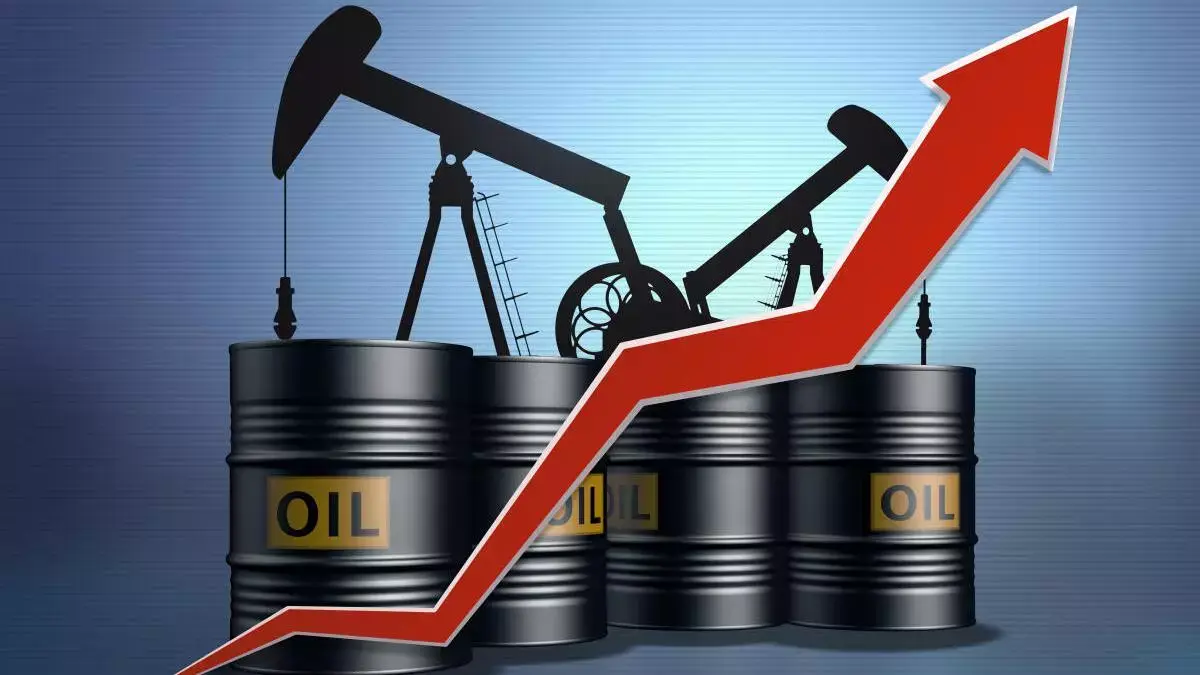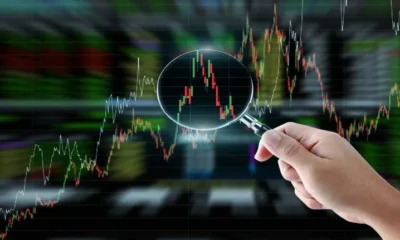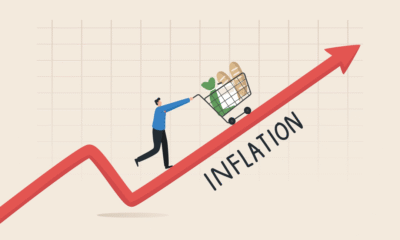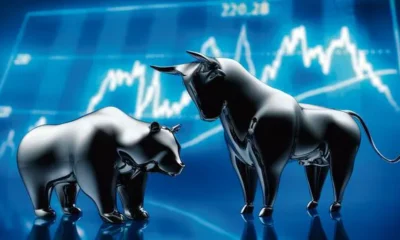Finance
The Impact of Geopolitical Tensions on Global Investment Portfolios

Understanding Geopolitical Tensions
Geopolitical tensions refer to conflicts and rivalries between nations that can have far-reaching implications on global stability and economic performance. These tensions frequently arise from disputes over territory, resources, ideological differences, or military aggression. In recent years, several prominent examples have emerged, impacting investor sentiment and causing fluctuations in market behavior.
One of the most illustrative cases of geopolitical tension is the ongoing conflict between Russia and Ukraine, which escalated significantly in 2022. This military confrontation not only affected regional stability but also disrupted global supply chains and energy markets. Investors closely monitored these developments, as the uncertainty led to volatility in stock markets worldwide. Similarly, the tension between China and the United States over trade practices, technology transfer, and military presence in the Asia-Pacific region exemplifies how trade disputes can escalate, influencing investment decisions and strategies across multiple sectors.
Geopolitical tensions can also manifest through diplomatic standoffs, where nations engage in aggressive rhetoric but refrain from military action. For instance, the strained relationship between North Korea and South Korea, coupled with the North’s continued nuclear development, presents an ongoing risk that could derail investment prospects in the region. Moreover, tensions surrounding climate change negotiations, such as those seen during global summits, can also have a significant impact on investment patterns, particularly in renewable energy sectors.
Overall, geopolitical tensions take various forms, each capable of affecting markets differently. Investors must keep a vigilant eye on these developments, as they not only influence immediate market reactions but also shape long-term investment strategies. Understanding the nature of these tensions is critical for effectively navigating global investment portfolios amidst an increasingly complex geopolitical landscape.
Historical Context: Past Impacts on Investments
The intersection of geopolitical tensions and investment portfolios has a storied history, marked by several pivotal events that have shaped market dynamics and influenced investor behavior. One of the most significant periods was the Cold War, which generated substantial uncertainty in global markets. The arms race and political conflicts during this era created volatility particularly within the defense sector. For instance, companies associated with military contracting experienced bullish trends, while industries reliant on international collaboration faced downturns due to trade restrictions and sanctions. An analysis of S&P 500 data from this period illustrates the fluctuations in market performance, where investors often shifted their portfolios towards safer assets during peak tensions.
Similarly, conflicts in the Middle East have historically caused ripples across various sectors, especially oil. The 1973 Oil Crisis is a prime example, where geopolitical strife led to skyrocketing oil prices and a consequent recession in many economies. Energy stock prices surged, reflecting the immediate impact of geopolitical events on investment portfolios. Investors who had the foresight to allocate funds to the energy sector during this period reaped substantial returns, highlighting the necessity for strategic adjustments in response to geopolitical changes.
In more recent history, trade wars, particularly between the United States and China, have illustrated the direct relationship between geopolitical tensions and market fluctuations. The imposition of tariffs led to immediate effects on sectors like technology and agriculture, showcasing how interconnected global markets are. Sector-specific performance data during this time reveal instances of dramatic shifts, reinforcing the importance of considering geopolitical events when constructing and managing investment portfolios.
As evidenced by these historical occurrences, the intricate interplay between geopolitical events and investment strategies is crucial for mitigating risk and capitalizing on opportunities within the market. Understanding past impacts provides a foundation for anticipating future developments in investment contexts.
Market Reactions to Geopolitical Events
Financial markets are inherently sensitive to geopolitical tensions, which can provoke significant shifts in asset prices and investor behavior. When geopolitical crises arise—such as conflicts, trade disputes, or diplomatic tensions—investors typically reassess their risk appetites, leading to heightened volatility across different asset classes. Equities often suffer the most immediate impact, as uncertainty may lead investors to flee from perceived riskier assets. Consequently, markets can experience sharp declines, particularly in sectors that are most exposed to international trade or geographic instabilities.
Bonds, on the other hand, generally serve as a refuge during times of turmoil. As equities drop, demand for government bonds often rises, pushing yields downward. Investors typically perceive government bonds, especially from stable economies, as safer investments during geopolitical uncertainties. The flight to quality can also bolster the prices of precious metals, such as gold, which traditionally act as a hedge against instability. Commodities may also experience a dual effect; essential goods may rise in price due to supply chain concerns, while others may suffer from reduced demand.
Currency markets are also influenced, as currencies of countries involved in geopolitical tensions often decline due to reduced investor confidence. Conversely, so-called safe-haven currencies—like the US dollar or Swiss franc—tend to appreciate. It is important to note that increased volatility is a common feature during geopolitical conflicts, with indexes such as the VIX (Volatility Index) typically spiking as uncertainty amplifies. Recovery phases can vary; while markets may rebound quickly following a resolution, investor sentiment can remain cautious as underlying geopolitical issues may linger.
Geopolitical Indicators Investors Should Monitor
Investors navigating the complex landscape of global markets must remain vigilant regarding various geopolitical indicators that can significantly influence investment portfolios. One of the primary factors to consider is government stability. Changes in leadership, political unrest, or shifts in policy can create volatility in markets. Tracking the rise or fall of political parties, as well as election outcomes, can provide insight into the potential direction of economic policies that affect various investment sectors.
Another crucial factor is military activities. Increased military engagements or tensions in specific regions often correlate with heightened risks for businesses and investments in those areas. Monitoring military drills, troop mobilizations, or conflicts can offer investors predictive signals regarding potential disruptions in supply chains or market access, thereby impacting investment decisions.
Economic sanctions imposed by countries can also serve as significant indicators for investors. These sanctions can disrupt trade relationships and lead to market volatility. Understanding the rationale behind these sanctions and the countries involved can help investors gauge their potential impact on global markets, especially in sectors like energy, commodities, and technology. By keeping an eye on announcements or shifts in sanctions, investors can better anticipate changes in market dynamics.
Lastly, trade agreements are critical indicators of the geopolitical climate. Sharper tariffs or the forging of multilateral trade pacts can reshape competitive advantages among nations. The ratification of trade agreements often stimulates investments, while the renegotiation or withdrawal from existing arrangements can lead to heightened uncertainty. Staying informed about trade negotiations and their outcomes allows investors to strategically position their portfolios to mitigate risks associated with geopolitical tensions.
By closely monitoring these indicators of geopolitical risk—government stability, military activities, economic sanctions, and trade agreements—investors can more accurately predict potential market movements and adjust their investment strategies accordingly.
Diversification Strategies in Times of Tension
The ever-evolving landscape of geopolitical tensions necessitates that investors adopt robust diversification strategies to safeguard their investment portfolios. A well-diversified portfolio is crucial for mitigating risk and enhancing the potential for returns, particularly during periods of uncertainty that accompany geopolitical strife. Geographic diversification serves as a primary method to spread risk; by investing in various regions, investors can protect themselves from localized downturns influenced by political or economic instability. For example, diversifying investments across North America, Europe, and emerging markets can provide a buffer against disruptions that might stem from geopolitical events in one specific region.
Additionally, asset allocation among different sectors is an effective approach to achieving balance in an investment portfolio. During times of geopolitical tension, certain sectors may be more resilient than others. For instance, industries such as technology and defense often see increased demand during crises, whereas sectors like tourism and retail might suffer. Hence, re-evaluating sector exposure and ensuring a mix of defensive and growth-oriented sectors can help maintain portfolio stability.
Moreover, incorporating alternative investments into a portfolio can further enhance diversification. Assets such as gold and real estate have historically acted as safe havens during turbulent times, providing both preservation of capital and potential appreciation. For instance, during previous geopolitical crises, savvy investors often increased their allocation to gold as it historically retains value when traditional equities falter. Similarly, real estate investments can offer stability through rental income and property appreciation, making them an attractive option for risk-averse investors. By utilizing these diversification strategies, investors can better position their portfolios to withstand and even thrive amidst geopolitical uncertainties.
Sector-Specific Effects of Geopolitical Tensions
Geopolitical tensions manifest in numerous ways, influencing various sectors of the economy differently. The energy sector is often the most immediately affected due to its direct ties to international relations and global supply chains. For instance, military conflicts in oil-rich regions can lead to immediate price spikes, as seen during conflicts in the Middle East. Such tensions can disrupt supply lines, leading to an increase in crude oil prices, which cascades through the economy, affecting transportation and logistics, and ultimately consumer prices. Companies in the energy sector are thus highly sensitive to shifts in geopolitical landscapes, leading to fluctuations in investment portfolios heavily weighted in this domain.
On the other hand, the technology sector may react more subtly to geopolitical tensions. Trade disputes, such as those observed between the United States and China, have resulted in tariffs that affect the profitability of tech giants reliant on overseas manufacturing. These events can shift consumer behavior and investor confidence, impacting stock valuations and long-term growth prospects. The tech sector also faces risks related to cybersecurity, which can escalate during heightened geopolitical tensions, creating vulnerabilities that investors must weigh.
Consumer goods tend to navigate geopolitical tensions with varying degrees of resilience. While essential goods remain in steady demand during crises, luxury brands may see a decrease in sales as consumer confidence wanes. For example, during economic downturns triggered by geopolitical strife, consumers often prioritize necessities over luxury items. Thus, companies in the consumer goods sector must adapt their strategies to manage demand fluctuations effectively during periods of instability. Understanding these sector-specific impacts of geopolitical tensions is crucial for investors aiming to manage risks and allocate their portfolios more effectively.
Risk Management and Geopolitical Events
In today’s complex investment landscape, geopolitical tensions can significantly disrupt market stability, making robust risk management practices essential for safeguarding investment portfolios. Investors must be proactive in adapting their strategies to navigate the uncertainties that arise from geopolitical crises. One effective approach is through the use of hedging strategies, which allow investors to offset potential losses in their portfolios. By employing instruments such as options or futures, investors can create a buffer against adverse market movements that might stem from international conflicts or other geopolitical factors.
Another vital tool in risk management is the implementation of stop-loss orders. These orders enable investors to set predetermined price levels at which their assets will be sold, thereby limiting potential losses. In the face of rising tensions, market volatility can lead to swift declines in asset values. By utilizing stop-loss orders, investors can preserve their capital and minimize the emotional stress associated with rapid market shifts. This mechanism ensures that investors have a clear plan in place during turbulent times, allowing them to react without being paralyzed by fear or uncertainty.
Furthermore, a comprehensive risk assessment framework is paramount in understanding and addressing the specific risks associated with geopolitical events. Such a framework should involve ongoing analysis of the political landscape, economic indicators, and potential threats to specific sectors or markets. By utilizing this framework, investors can make informed decisions that account for both current and anticipated geopolitical risks. This strategic approach not only enhances an investor’s ability to adapt but also promotes a disciplined investment strategy that prioritizes capital preservation in the face of adversity.
Long-Term Investment Perspectives Amidst Uncertainty
In the ever-evolving landscape of global finance, geopolitical tensions invariably shape market dynamics. However, it is crucial for investors to adopt a long-term perspective, especially when faced with short-term volatility prompted by external political or military events. Historical analyses reveal that despite periods of market uncertainty triggered by geopolitical disruptions, resilience often characterizes the financial markets over extended horizons. Thus, a well-defined long-term investment strategy can pave the way for more sustained financial growth.
For instance, after significant geopolitical events such as the Gulf War in the early 1990s and the 2008 financial crisis, markets have demonstrated a remarkable capacity for recovery. Investors who remained committed to their long-term portfolios during these turbulent times typically reaped the benefits as markets rebounded and new opportunities emerged. This historical context underscores the idea that panicking or making hasty investment decisions during crises can lead to missed opportunities for growth.
Moreover, maintaining a resilient investment approach can facilitate long-term success. Investors may consider diversification as a critical strategy to cushion against potential market shocks stemming from geopolitical tensions. By spreading investments across various asset classes, sectors, and geographical regions, investors can mitigate risk and enhance the potential for returns despite uncertainties originating from global affairs.
Furthermore, it is vital to focus on fundamental strengths and long-term trends rather than reacting to transient geopolitical events. Industries such as renewable energy, technology, and health care continue to show promise irrespective of temporary political tensions. Therefore, a commitment to a long-term strategy, informed by historical precedence and adaptable to changing conditions, can enable investors to navigate through uncertain times successfully, ultimately yielding sustainable returns.
Conclusion: Navigating the Future of Investments
In recent years, the landscape of global investments has been profoundly influenced by rising geopolitical tensions. The interplay between various nation-states, economic factors, and local conflicts has created an environment where volatility and uncertainty have become the norm. Investors are increasingly aware that political events and geopolitical dynamics can significantly impact market stability, often leading to swift shifts in investment strategies. Consequently, a proactive approach to portfolio management is essential for mitigating risks associated with these external factors.
Central to navigating these turbulent waters is diversification, which acts as a safeguard against concentrated risks originating from specific regions or sectors. By allocating assets across a broad spectrum of markets—both geographically and across industries—investors can enhance their resilience against geopolitical shocks. Additionally, keeping abreast of global political developments and their potential implications on economic performance allows for informed decision-making and timely adjustments to investment strategies. This vigilance is particularly crucial given the unpredictable nature of international relations.
Looking forward, it is anticipated that geopolitical tensions will continue to shape investment paradigms. The rise of new economic powers, coupled with shifts in trade policies, has the potential to alter long-established investment flows. Long-term success will hinge not only on recognizing these changes but also on embracing a flexible investment strategy that can adapt to evolving geopolitical realities. As such, investors should continually assess both their exposure to geopolitical risk and their diversification strategies.
In conclusion, as the global investment landscape evolves in response to geopolitical tensions, a proactive, informed, and flexible approach is vital. Investors must regularly evaluate their portfolios, ensuring they are well-positioned to navigate the complexities of an interconnected world. By fostering a keen awareness of global dynamics and embracing diversification, investors can better mitigate risks while capitalizing on emerging opportunities.
Investing
Global Investor Outflows from U.S. Stocks & Dollar

In a shift that is sending ripples across financial markets, institutional investors around the world are pulling back from U.S. equities and reducing exposure to the U.S. dollar, signaling a significant change in sentiment toward American assets. According to the latest Bank of America Global Fund Manager Survey, global investors are now the most underweight on U.S. stocks in more than two decades, with the dollar facing similar skepticism as a long-term safe-haven asset. This transition is being fueled by multiple converging factors, including geopolitical instability, growing U.S. fiscal deficits, trade tensions, and an increasingly favorable investment climate in Europe and select emerging markets. For investors, economists, and policymakers alike, this trend represents a rebalancing of global capital flows that could reshape market dynamics in the months ahead.
Investor Sentiment Toward U.S. Markets Hits Multi-Year Lows
The Bank of America survey, considered a key barometer of global institutional sentiment, reveals that fund managers have turned heavily underweight on U.S. stocks and the dollar, preferring instead to rotate their portfolios into European and Asian equities. The survey showed that 36% of participants are now net underweight U.S. equities—the highest level since 2003. At the same time, positioning on the dollar turned net negative for the first time in over five years, with investors citing mounting fiscal concerns, valuation extremes, and weakening macroeconomic indicators.
The U.S. equity market, especially the tech-heavy NASDAQ, has experienced an extraordinary bull run over the last several years. But now, investors are questioning the sustainability of elevated valuations, particularly as economic growth slows, earnings forecasts are revised downward, and inflation remains persistently above target. Many portfolio managers believe the best returns may no longer be found in U.S. assets alone.
Rising U.S. Debt and Fiscal Deficits Raise Red Flags
A key driver of investor caution is the ballooning U.S. fiscal deficit. The Congressional Budget Office (CBO) projects that the U.S. federal deficit will reach over $1.8 trillion this year, driven by increased government spending, rising interest costs, and lower-than-expected tax revenues. The national debt is now projected to exceed 125% of GDP by 2030, raising serious questions about long-term fiscal sustainability.
Investors fear that soaring U.S. debt levels could lead to a loss of confidence in Treasury securities, pushing yields higher and triggering volatility in global credit markets. This concern is magnified by the growing political polarization in Washington, which has led to repeated debt ceiling standoffs and policy gridlock. As a result, some asset managers are choosing to diversify their bond portfolios with sovereign debt from countries like Germany, Canada, and Australia—nations viewed as having stronger fiscal discipline.
Geopolitical Tensions Erode Dollar Safe-Haven Appeal
The traditional role of the U.S. dollar as a global safe-haven currency is also being called into question. With the U.S. now embroiled in rising geopolitical conflicts, including its military engagement in the Middle East and an escalating trade war with China, the perception of the dollar as a “neutral” or stable currency is beginning to fade. Several countries, particularly in the Global South, have voiced frustration over the dominance of the dollar in international trade, and some have even accelerated efforts to settle trade in alternative currencies such as the euro, yuan, or local currency blocs.
In response, central banks in emerging markets are reducing their U.S. dollar reserves and increasing holdings in gold and non-dollar currencies. This trend, while gradual, is gaining momentum and contributing to the dollar’s underperformance against a basket of global currencies. The U.S. dollar index (DXY) has declined by nearly 6% year-to-date, reflecting both diminished investor confidence and a broader reconfiguration of reserve management strategies.
Attractive Valuations Abroad Drive Capital Outflows
While risks in the U.S. are mounting, attractive investment opportunities abroad are also contributing to the outflow of capital from American markets. European equities, particularly in sectors like green energy, luxury goods, and financial services, are seeing renewed interest thanks to relatively low valuations and improving macroeconomic stability. The recent ECB rate cuts and Eurobond discussions have added to optimism about the region’s fiscal and financial integration.
In Asia, countries like India, Indonesia, and Vietnam are emerging as new hotspots for foreign direct investment and equity inflows. These economies offer robust growth prospects, younger demographics, and increasingly tech-driven industries. Additionally, Japan’s bond market is seeing increased institutional buying, as long-term yields rise in response to the Bank of Japan’s policy changes.
This global diversification strategy is not just about seeking higher returns—it’s also about managing risk. Investors are increasingly looking to balance their portfolios geographically, reducing dependence on any single region and hedging against macroeconomic shocks that may be specific to the U.S.
Currency Hedging and Diversification as Defensive Strategies
In response to the dollar’s volatility, many fund managers are now engaging in currency hedging strategies to protect their portfolios. Currency ETFs, options, and forward contracts are being used to minimize the downside risk of a weakening dollar. At the same time, global investment funds are ramping up their exposure to non-dollar-denominated assets, including eurozone corporate bonds, emerging market debt, and local-currency sovereign issues.
Moreover, ESG and green bond markets in Europe and Asia are attracting capital due to their alignment with global sustainability goals. These instruments not only offer diversification but also align with broader institutional mandates on responsible investing.
Implications for U.S. Markets and Monetary Policy
The capital flight from U.S. assets could have significant implications for American markets. A persistent decline in foreign demand for U.S. Treasuries may force the Federal Reserve to intervene more frequently in the bond market to maintain liquidity and control yields. At the same time, a weaker dollar could contribute to imported inflation, complicating the Fed’s efforts to bring core inflation back within its target range.
On the equities side, if investor outflows persist, U.S. companies may face higher capital costs and declining valuations, particularly in sectors that rely heavily on foreign investment or exports. Domestic pension funds and institutional investors may need to fill the gap left by global investors, which could further alter asset allocation strategies and influence corporate financing decisions.
A New Era of Global Capital Rotation
The growing shift away from U.S. stocks and the dollar signals the beginning of a new era in global investing, one defined by diversification, geopolitical hedging, and currency rebalancing. While the U.S. remains a central player in global finance, the days of unquestioned dominance are beginning to fade, as investors embrace a more nuanced and distributed view of risk and opportunity.
For market participants, staying agile in this environment means tracking global fund flows, monitoring geopolitical developments, and reassessing the traditional U.S.-centric portfolio model. As capital continues to flow into European and Asian markets, the future of global finance is being rewritten—and those who adapt early may find themselves ahead of the curve.
Finance and Economy
France Pushes Eurozone Toward Joint Eurobond Issuance

In a bold move that could redefine the financial architecture of the European Union, France has renewed its push for the issuance of joint eurozone debt instruments – commonly referred to as Eurobonds – as a way to strengthen the euro on the global stage. As the EU prepares for its upcoming summit on June 26-27, the proposal is once again stirring heated debate among member nations. French officials argue that a shared debt mechanism is essential not only for financial resilience but also for elevating the euro’s standing as a credible alternative to the U.S. dollar. While the idea garners support from key institutions like the IMF and the ECB, resistance from fiscally conservative member states continues to block consensus. This article explores the implications of France’s proposal, the potential benefits and challenges of Eurobond issuance, and the evolving role of the euro in a multipolar financial world.
France’s Strategic Case for Eurobonds
French President Emmanuel Macron and Finance Minister Bruno Le Maire have long been advocates for deeper EU financial integration. According to them, Eurobonds would represent a tangible step toward fiscal solidarity and monetary cohesion, allowing member nations to borrow at collectively favorable rates while demonstrating political unity. The latest push comes at a time when the European economy is facing several headwinds: slowing growth, fragmented recovery across member states, and heightened global financial volatility triggered by geopolitical conflicts and energy insecurity. Macron has reiterated that a common debt tool is essential for financing major EU-wide projects such as green energy transition, digital infrastructure, and military defense.
From a strategic standpoint, France views Eurobonds as more than just a financial mechanism – they are a symbol of EU credibility and resilience. By pooling risk and aligning borrowing capacity, the eurozone could present a united front in capital markets, reducing the vulnerability of weaker economies and improving the euro’s attractiveness to foreign investors.
The Euro’s Current Global Standing and Its Challenges
Despite being the world’s second most-used currency, the euro still lags far behind the U.S. dollar in terms of global reserve share, trade settlement, and safe-haven preference. Analysts point out that one of the primary reasons for this is the fragmented nature of the eurozone bond market. Each country issues its own sovereign debt, leading to a lack of a single, risk-free eurozone bond benchmark – unlike U.S. Treasuries, which offer deep liquidity and low risk.
France’s proposal seeks to address this imbalance. A unified Eurobond market could create a highly liquid, stable, and scalable financial product that would attract central banks, pension funds, and sovereign wealth investors. Over time, this could shift more global reserves into euros, boosting the currency’s influence in global trade and finance.
Institutional Support: IMF, ECB, and Market Participants
Key international organizations have thrown their weight behind the idea. The International Monetary Fund (IMF) has suggested that Eurobonds could enhance the EU’s fiscal capacity and crisis response agility. Meanwhile, European Central Bank (ECB) officials, including President Christine Lagarde, have hinted that deeper fiscal integration is necessary for the euro to realize its full potential.
Financial market participants have also shown interest. Asset managers argue that Eurobonds could become a cornerstone of fixed-income portfolios, particularly for investors looking to diversify away from dollar-denominated assets. Some analysts compare the opportunity to the creation of the U.S. Treasury market in the post-war era, which laid the groundwork for the dollar’s global dominance.
Opposition from the Frugal Four and Risk-Sharing Concerns
Despite France’s enthusiasm and institutional support, significant opposition persists from fiscally conservative EU nations, notably Germany, Austria, the Netherlands, and Finland—often dubbed the “Frugal Four.” These countries argue that shared debt would penalize responsible fiscal behavior and open the door to moral hazard, where weaker economies might overborrow under the protection of joint guarantees.
German officials have also cited constitutional constraints and public opposition to any perceived “debt mutualization.” Instead, they advocate for reforms at the national level, more stringent budget controls, and the use of existing mechanisms like the European Stability Mechanism (ESM) for crisis funding.
This divide continues to stall formal negotiations. At the heart of the debate is the question of trust and fiscal governance, as many northern states remain skeptical about the long-term commitment of their southern counterparts to austerity and budget discipline.
Implications for Financial Markets and Investors
If approved, Eurobonds would be a game-changer for European capital markets. They would offer a new safe asset class, potentially rivaling U.S. Treasuries in size and reliability over the long term. For the European banking system, Eurobonds could provide high-quality collateral and improve liquidity conditions, especially for cross-border lending.
Investors are closely monitoring the situation. If the EU takes concrete steps toward joint bond issuance, bond yields across peripheral economies like Italy, Spain, and Greece could compress further, as risk premia shrink in anticipation of shared guarantees. Simultaneously, euro-denominated assets may see a surge in foreign inflows, especially from central banks seeking to rebalance reserve portfolios.
Strengthening the Euro’s Role in a Multipolar World
The geopolitical landscape is increasingly defined by multipolarity, with China, Russia, and the U.S. competing for influence in trade, finance, and security. In this context, the eurozone faces a historic opportunity to carve out a more assertive role. Strengthening the euro through fiscal and capital market integration is seen as essential to counterbalance the dollar’s dominance and reduce reliance on U.S.-led financial infrastructure.
Eurobonds could serve as a financial pillar in this transition. As global investors seek alternatives in a fragmented world economy, the euro’s rise as a stable, investable, and liquid currency backed by joint instruments could bolster its credibility and utility.
A Defining Moment for European Unity
France’s push for Eurobonds is more than just a fiscal proposal – it is a call for political and financial unity in a time of global uncertainty. While the road to consensus is steep, the growing support from institutions, investors, and southern EU members suggests that momentum is building. The upcoming EU summit will be a crucial test of the bloc’s ability to move beyond national interests and toward a shared financial future.
If successful, Eurobond issuance could redefine the eurozone’s role in the global economy, offering new tools for crisis response, economic development, and financial competitiveness. For investors and policymakers alike, this moment marks a critical juncture – either Europe seizes the opportunity to lead, or it risks remaining a secondary player in a rapidly evolving financial world.
Finance and Economy
Oil Price Spike as Middle East Conflict Deepens: A Global Market Wake-Up Call

The financial world is once again on high alert as escalating tensions in the Middle East have triggered a sharp surge in global oil prices, sending shockwaves through equity, commodity, and currency markets alike. With the U.S. reportedly striking Iran’s nuclear sites, Brent crude surged over 18%, nearing $80 per barrel in a matter of hours. The sudden volatility reignited fears of a potential $100 oil scenario, reminiscent of past geopolitical flashpoints that deeply impacted global supply chains, inflation expectations, and central bank policy stances. This article delves into the causes, consequences, and global financial implications of this emerging crisis.
The Trigger: U.S. Strikes on Iran’s Nuclear Infrastructure
On June 21, 2025, international news outlets confirmed that U.S. military forces had targeted Iranian nuclear facilities in what they described as a “pre-emptive defensive measure.” While the full extent of the damage is still being assessed, the attack has clearly escalated tensions in an already volatile region. The Middle East, being a vital hub for global oil production and shipping, plays a significant role in maintaining supply stability. Iran, which controls access to the Strait of Hormuz – a key chokepoint through which nearly 20% of the world’s oil supply passes—responded with threats to close the strait and intensify its military posturing. This heightened the risk premium in energy markets virtually overnight.
Oil Prices React Swiftly to Geopolitical Instability
Crude oil, especially Brent and West Texas Intermediate (WTI), reacted with extreme sensitivity to the developments. Brent crude jumped over 18% within a 24-hour period, while WTI saw a comparable surge. Analysts at Goldman Sachs and JPMorgan warned that if the Strait of Hormuz were to be blocked, prices could surpass $100 per barrel within weeks. The last time the oil market saw such an intense geopolitical premium was during the 2019 drone attacks on Saudi oil facilities. However, the current situation has a more severe undertone due to the involvement of nuclear assets and direct military strikes between two powerful adversaries.
Safe Haven Assets Soar as Risk Appetite Declines
As is common in times of geopolitical crisis, investors flocked to safe-haven assets such as gold, the U.S. dollar, and U.S. Treasuries. Gold climbed above $2,400 per ounce, a level not seen in years, while the U.S. dollar index rose nearly 2% as capital fled emerging markets and riskier assets. Meanwhile, 10-year U.S. Treasury yields fell sharply, reflecting a surge in demand for perceived low-risk instruments. Cryptocurrency markets, particularly Bitcoin, experienced a brief rally as some investors viewed digital assets as alternative stores of value, although that rally quickly reversed amid broader market instability.
Stock Markets Face Broad Sell-Off, Led by Energy-Sensitive Sectors
Equity markets around the globe responded negatively. The S&P 500 and NASDAQ both dropped over 2.5% in intraday trading, led by declines in consumer discretionary, industrials, and airline stocks, which are highly sensitive to fuel price increases. European indices such as the FTSE 100 and DAX also saw steep losses, while Asia-Pacific markets like the Nikkei 225 and Hang Seng Index fell sharply as investors priced in a higher global risk premium. Interestingly, energy stocks provided the only bright spot in an otherwise red sea of market activity, with companies like ExxonMobil and Chevron posting strong gains on expectations of rising revenues.
Inflationary Pressures Could Derail Central Bank Strategies
The surge in oil prices couldn’t have come at a worse time for global central banks. After years of battling inflation through aggressive interest rate hikes, many central banks had only just begun to pause or consider rate cuts in 2025. However, higher energy prices feed directly into inflation, particularly in transport, manufacturing, and agriculture sectors, potentially forcing monetary authorities to reverse their dovish pivot. The European Central Bank (ECB), which had recently initiated its first rate cut in years, may now face pressure to hold off on further easing. Similarly, the Federal Reserve, which had opted to maintain its current rate in the last FOMC meeting, is likely to adopt a more hawkish tone moving forward.
Emerging Markets Bear the Brunt of the Crisis
The fallout from spiking oil prices is especially damaging for emerging markets, which are typically more sensitive to commodity price fluctuations. Countries like India, Turkey, and South Africa, which are major oil importers and have significant current account deficits, saw their currencies depreciate against the dollar. This adds to inflationary pressures and increases the cost of dollar-denominated debt, complicating fiscal and monetary policy responses. Foreign institutional investors also withdrew capital from these markets, adding to equity market stress and further depressing sentiment.
Global Economic Growth at Risk
Economists are revising down global GDP forecasts amid fears that higher oil prices will dampen consumer spending, elevate production costs, and destabilize corporate earnings. According to the IMF, a sustained oil price above $90 could reduce global GDP growth by 0.5% annually, with some regions like Southeast Asia and Sub-Saharan Africa experiencing even greater negative impacts. Supply chains, already recovering from post-pandemic disruptions and trade tensions, now face renewed uncertainty due to potential shipping bottlenecks in the Persian Gulf.
Outlook: What Comes Next for Markets and Policymakers?
Going forward, much depends on how the situation in the Middle East evolves. A de-escalation through diplomatic channels, possibly via UN or EU mediation, could stabilize oil prices and soothe market nerves. On the other hand, if Iran follows through on its threat to block the Strait of Hormuz or retaliates militarily, the crisis could escalate into a full-blown regional conflict with severe repercussions for global trade and energy supply. Policymakers worldwide are monitoring the situation closely, and emergency meetings by OPEC and G20 finance ministers are already being planned. The International Energy Agency (IEA) has also signaled its willingness to release strategic petroleum reserves if needed to calm markets.
The Road Ahead is Uncertain but Manageable
In the face of rising geopolitical tensions and economic uncertainty, investors are advised to adopt a cautious, diversified approach. While markets remain volatile and unpredictable, sound investment principles – such as maintaining a balanced portfolio, avoiding over-leveraged positions, and focusing on long-term fundamentals – remain more relevant than ever. The oil price spike triggered by the U.S.-Iran conflict is a potent reminder of how global politics and finance are deeply intertwined, and why staying informed and agile is critical in today’s interconnected world.
-

 Finance & Investment6 months ago
Finance & Investment6 months agoEmerging Markets to Watch in 2025: Opportunities and Risks
-

 Technology and Finance8 months ago
Technology and Finance8 months agoThe Future of Quantum Computing in Financial Modeling and Trading
-

 Finance7 months ago
Finance7 months agoUSA Market Trends & Global Finance Insights
-
Finance7 months ago
Navigating Retirement in the Gig Economy: Challenges and Solutions
-

 Finance8 months ago
Finance8 months agoNavigating Personal Finance in the Age of Inflation and High Interest Rates
-

 Economics6 months ago
Economics6 months agoGlobal Markets React to U.S. GDP Contraction: A Comprehensive Analysis
-

 Investing & Finance8 months ago
Investing & Finance8 months agoFractional Investing: The Path to Wealth Democratization
-

 Finance7 months ago
Finance7 months agoTop 10 High-Yield Savings Accounts in the US (2025 Edition)
















